Giant leap in robotization
CHIMP performs one of the most difficult tasks - trying to attach a fire hose to a hydrant
Competitions robots The Robotics Challenge, run by the Defense Advanced Research Projects Agency DARPA, promises to revolutionize what systems can do and how they are designed. Let's look at this event and evaluate the opinion of a number of key players.
11 March 2011 in Japan was a powerful earthquake with an epicenter approximately 70 km off the east coast of the island of Honshu. As a result of an earthquake with a power of 9 points, waves formed that reached a height of 40 meters and spread inland into 10 km.
The Fukushima I nuclear power plant stood in the way of a devastating tsunami. A catastrophic destruction of reactors occurred at the impact of giant waves at the station. This incident was the worst nuclear tragedy since the Chernobyl accident in 1986. This event formed the basis of the scenario, perhaps one of the most significant programs for robots today - DRC (DARPA Robotics Challenge - practical tests of robotic systems under the program of the Office of Advanced Research and Development of the US Department of Defense).
DRC testing was announced in April 2012, and disaster relief was selected as the test scenario. The development of new systems was necessary in this scenario, mainly due to the fact that it was part of the 10 key missions of the US Department of Defense identified by the White House and the Secretary of Defense in January 2012. In December, the 2013 of the year, as part of these competitions, passed an important stage, when the first "full-scale" tests were first held in Florida.
DRCs are distinguished by several innovative aspects, they combine virtual and field tests, they are open to funded and unfunded teams. This event consists of four so-called sections or tracks; DARPA provided financial support for the two tracks Track A and Track B and opened these competitions for all new arrivals.
Of the four tracks, two (Track A and Track B) received funding. After a general announcement and submission of documents for the competition, DARPA selected for Track A seven teams that were tasked with developing new hardware and software; In Track B, the 11 teams developed only software.
Track C is not funded and is open to new entrants from around the world; as participants of the Track Track. In its participants, first of all, they used the virtual simulation program of the robot to test their software. Track D is intended for foreign participants who wish to develop hardware and software, but without DARPA funding at any stage.
The key to the innovative DRC approach was the VRC component (Virtual Robotics Challenge - virtual tests of robotic systems). The teams that have taken the best places in it - whether they are from Track B or C - will receive funding from DARPA, as well as to use the Atlas robot from Boston Dynamics, with which they will take part in field tests.
In May, 2013, teams from Track B and Track C, applied to qualify for VRC, which was held next month. Of the more than 100 registered teams, only 26 continued on to the VRC and the entire 7 team approached full-scale tests.
VRC were held in high-precision virtual space, licensed by the Apache 2 Open Source Foundation. The teams were given the task of completing three of the eight tasks that were identified for real robots in the first field tests.
Test
While the capabilities of the robots demonstrated in the VRC were impressive, there was no one hundred percent certainty in the way they would behave in field tests; however, DRC program director Jill Pratt said he was very pleased with their capabilities. “We expected that since it was the first physical part of the tests, we could see a lot of hardware failures, but in fact it was not the case, all the hardware was very reliable. The first few teams, especially the first three, managed to get more than half the points and made significant progress even when we intentionally interfered with the communication channel. ”
Pratt was also impressed with the capabilities of the Atlas robot, "He really exceeded our expectations ... Boston Dynamics did a great job so that none of the teams would suffer from any hardware failure."
However, there is still room for improvement, these are arm arms with limited working space and leaks from the hydraulic system of the robot. The modernization process began even before the December 2013 event. Pratt said that he would also like to increase the number of different instruments in the finals and the robots will most likely have a belt with instruments from which they will need to select the right instruments during the execution of the script and change them.
The Atlas robot was also praised by Doug Steven, a research fellow and software engineer at the Florida Institute of Human Cognitive Abilities and Machines, whose team in Track B ranked second in field tests. "This is quite a wonderful robot ... we worked with it 200 hours of pure time for two or three months and this is very unusual for an experimental platform - the ability to work steadily and not break."
Behind the impressive capabilities of robots in the DRC are literally heroic efforts; Tasks are designed to be particularly difficult and to test the hardware and software parts developed by the teams.
Although the tasks were difficult, Pratt did not think that DARPA had overstated the bar too high, noting that each task was completed by at least one of the teams. The most difficult tasks were driving and connecting hoses. According to Stephen, the first was the most difficult: “I would definitely say - the task of driving a car, and not even because of the driving itself. If you want to get completely autonomous driving, which is very difficult, then you always have a robot operator. Driving was not so difficult, but getting out of the car is much more difficult than people can imagine; it's like solving a big three-dimensional puzzle. ”
In accordance with the format of the DRC finals, which must pass in December 2014, all tasks will be combined into one continuous scenario. All this in order to make it more reliable and give teams a strategic choice on how to carry it out. The difficulty will also increase, and Pratt added: “Our task for teams that have performed well at Homstead is to make it even harder. We are going to remove the attached cables, remove the communication cables and replace them with a wireless channel, while we are going to degrade the communication quality so that it becomes worse than in previous tests. ”
“My plan at the moment is to make the connection intermittent, sometimes it will have to completely disappear, and I believe that this should be done in a random order, as happens in real disasters. We'll see what robots can do in a few seconds, or maybe up to a minute, trying to do some subtasks on their own, even if they are not completely cut off from the operator’s control and I think it will be a very interesting spectacle. ”
Pratt said the safety systems will also be removed in the finals. "This means that the robot will have to withstand a fall, it also means that it must rise on its own and this will actually be quite difficult."
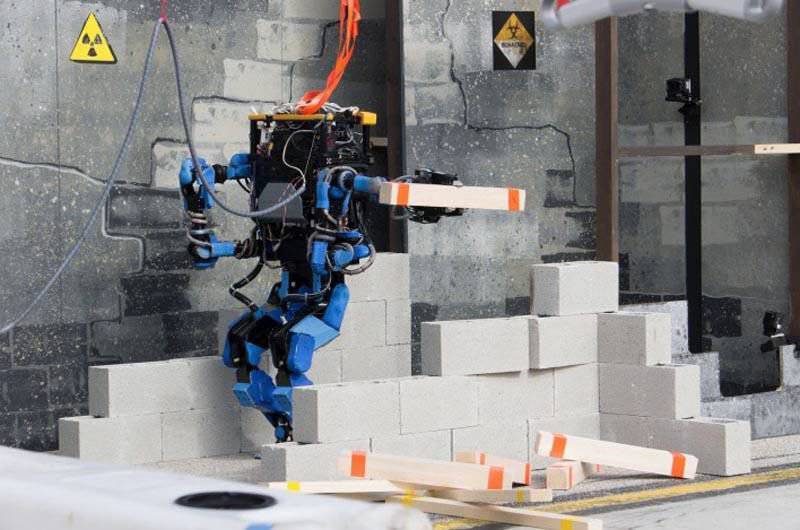
Schaft robot removes debris from its path
Challenges and strategies
Of the eight teams during the test, five used the ATLAS robot, however, the participants of Track A — Team Schaft winner and Team Tartan Rescue third prize winner — used their designs. Tartan Rescue comes from the National Engineering Center for Robotics at Carnegie Mellon University (CMU), for testing under the DRC, this team has developed the CMU Highly Intelligent Mobile Platform (CHIMP). Tony Stentz from Tartan Rescue explained the rationale for the team to develop his own system: “It may be safer to use an already prepared humanoid robot, but we understood that we could create a better design for responding to disasters.”
“We knew that we had to create something of a approximately human form, but we didn’t like the need to maintain balance in their humanoid robots. When two-legged robots move, they need to keep their balance so as not to fall and it is quite difficult on a flat surface, but when you talk about moving through construction debris and attacking objects that can move, it becomes even more difficult. Therefore, CHIMP is statically stable, it rests on a fairly wide base and in a vertical position it rolls on a pair of caterpillars in its legs, so it can go back and forth and turn in place. It is easily positioned to expose the hands to carry everything that is needed on the task; when he needs to move on more difficult terrain, he can fall on all four limbs, since he also has tracked propellers on his hands. ”
It is inevitable that teams from different tracks faced different problems in preparation for testing, the Institute of human cognitive abilities and machines focused on software development, because this is the most difficult problem - the transition from VRC to full-scale tasks. Stephen said that “when the Atlas robot was delivered to us, there were two“ modes ”in it that you could use. The first is a simple set of movements provided by Boston Dynamics, which you could use for the movement and which was a bit flawed. It turned out that most of the teams used these built-in modes from Boston Dynamics during the competition in Homestead, very few teams wrote their own robot control software and no one wrote their own software for the whole robot ... "
"We wrote our own software from scratch and it was a full-body controller, that is, it was one controller that worked in all tasks, we never switched to other programs or another controller ... Therefore, one of the most difficult tasks was to create program code and run it on Atlas, since it was a kind of black box when Boston Dynamics presented it to us, but it’s their robot and their IP, so we really didn’t have access to the on-board computer at a low level. Our software runs on an external computer and then binds to used I eat API (application programming interface) of fiber with an onboard computer, and there are long delays and problems with the synchronicity here already become quite difficult to control such a complex system as the Atlas ».
Although writing your own code from scratch was certainly more difficult and time consuming for the Institute of human cognitive abilities and machines, Stephen believes that this approach is more profitable, since problems can be solved more quickly than relying on Boston Dynamics. In addition, the accompanying Atlas software was not as advanced as the software that Boston Dynamics uses in its own demonstrations “when they sent the robot ... they said quite openly that the movements are not the same as you see when Boston Dynamics puts the video in Youtube a robot working on the software of this company. This is a less advanced version ... this is enough for learning a robot. I don’t know if they were going to give the code to the teams for use, I think they didn’t expect everyone to write their own software. That is, what was put together with the robot was possible initially and was not intended to carry out all eight tasks on practical DRC tests. ”
For the Tartan Rescue team, the biggest challenge was the tight schedule that it had to adhere to when developing a new platform and related software. “Fifteen months ago, CHIMP was just a concept, a drawing on paper, so we had to develop the parts, make the components, assemble it all and test everything. We knew that it would take most of our time, we could not wait and not start writing software until the robot is ready, so we started developing software in parallel. We actually did not have a full-fledged robot for work, so we used simulators and hardware substitutes for development. For example, we had a separate arm-manipulator, which we could use when checking certain things for a single limb, ”explained Stentz.
Regarding the difficulties that the deterioration of data transmission channels would add, Stentts noted that this decision was made from the very beginning specifically for such situations and that this is not a very difficult problem. “We have sensors mounted on the robot's head — laser range finders and cameras — that allow us to build a full 3-D texture map and model of the environment surrounding the robot; This is what we use from the operator’s side to control the robot and we can imagine this situation in different resolutions depending on the available frequency band and communication channel. We can focus our attention and get higher resolution in some areas and lowered in other areas. We have the ability to remotely control the robot directly, but we prefer a higher level of control when we define targets for the robot and this control mode is more resistant to signal loss and delays. ”
Schaft robot opens the door. Improved robot handling capabilities will be required for future systems.
Next Steps
Stentz and Stephen said that their teams are currently evaluating their capabilities in real-world trials in order to evaluate what actions need to be taken to move forward, and that they expect a conclusion-recall from DARPA and additional information about what will be in finals. Stephen said that they also expect to receive a certain modification for Atlas, noting one already approved requirement for the final - the use of an onboard power supply. For CHIMP, this is not a problem, since a robot with electric drives can already carry its own batteries.
Stentz and Stephen agreed that there are a number of problems that need to be solved when developing the sphere of robotic systems and creating platform types that can be used in disaster relief scenarios. “I would say that there is not one thing in the world that could be a panacea. I think in terms of hardware that machines that have more flexible handling capabilities can be useful. As for software, I believe that robots need a greater level of autonomy so that they can do better in remote operations without a communication channel; they can accomplish tasks faster, because they do a lot of things themselves and make more decisions per unit of time. I think good news is that the competition under the auspices of DARPA is really designed to promote both areas of hardware and software, ”said Stentz.
Stephen believes that improvements in technology development are also needed. “As a programmer, I see many ways to improve software and I also see many opportunities for improvements in the process of working on these machines. A lot of interesting things happen in laboratories and universities where there may not be a strong culture of this process, so sometimes the work goes haphazardly. Also, looking at really interesting projects on DRC tests, you realize that there are many opportunities for improvements in hardware and for innovations. ”
Stephen noted that Atlas is the main example of what can be achieved - a workable system developed in a short time.
For Pratt, however, the problem is more defined and he believes that software development should be carried out first. “The idea I'm trying to convey is that the main part of the software is between the ears. I mean what is happening in the brain of the operator, what is happening in the brain of the robot and how the two agree with each other. We want to dwell on the hardware of the robot and we still have problems with it, for example, we have problems with the cost of production, with the efficiency of power supply ... Undoubtedly the most difficult part is software; and this is the software code for the robot-human interface and the software code for performing the task for the robots themselves, which includes perception and situational awareness, awareness of what is happening in the world and a choice based on what the robot perceives. ”
Pratt believes that the search for commercial applications for robots is key to the development of advanced systems and the advancement of industry. “I believe we really need commercial applications in addition to the elimination of disasters and the general defense sphere. The truth is that the markets, defense, rapid response and disaster relief, are tiny compared to the commercial market. ”
“We love a lot to talk about it in the management of DARPA, let's take cell phones as an example. DARPA financed many of the developments that led to the technologies used in cell phones ... If it was only the defense market, for which the cell phone itself was intended, they would cost many orders of magnitude more than they are now, thanks to the huge commercial market, allowed to get incredible accessibility of cell phones ... "
“In the field of robotics, our view is that we need exactly this sequence of events. We need to see the commercial world buying applications that will cause prices to fall, and after that we will be able to create systems specifically for the military, in which investments from the commercial sphere will be invested. ”
Eight first teams will take part in the December 2014 trials - Team Schaft, IHMC Robotics, Tartan Rescue, Team MIT, Robosimian, Team TRAClabs, WRECS and Team Trooper. Each will receive one million dollars to improve their decisions and, ultimately, the winning team will receive the 2 million prize, although for the majority recognition is much more valuable than money.
NASA's Robosimian Jet Propulsion Laboratory has an unusual design.
Virtual item
The inclusion of two tracks of DARPA in the DRC tests, in which only software development teams participate, speaks of the management's desire to open programs to the widest possible range of participants. Previously, such technological development programs were the prerogative of defense companies and research laboratories. However, the creation of a virtual space in which each team can test its software allowed competitors who did not have or had little experience in developing software for robots to compete at the same level as well-known companies in this field. DARPA also considers the simulated space as a long-term legacy of DRC testing.
In 2012, the DARPA Authority commissioned the Open Source Software Foundation to develop a virtual space for the Challenge competition and this organization began creating an open model using the Gazebo software package. Gazebo is capable of simulating robots, sensors and objects in a three-dimensional world, it is designed to provide realistic data from sensors and what is described as “physically plausible interactions” between objects.
Open Source Foundation Chairman Brian Gjorki said Gazebo was used because of its proven capabilities. “This package is widely used in the robotic community, which is why DARPA wanted to bet on it, because we saw its advantages in what it does; we could create a community of developers and users around it. ”
Although Gazebo was already a well-known system, Görki noted that while there is still room for improvement, steps must be taken to meet the requirements defined by DARPA. “We did very little to simulate walking robots, we mainly focused on wheeled platforms and there are some aspects of the simulation of walking robots that are quite different. You must be very careful how you make contact resolution and how you model the robot. This way you can get good parameters in exchange for accuracy. It took a lot of effort to do detailed modeling of the physics of the robot, so you can get good quality modeling and get a working robot almost in real time, unlike a job that works in one tenth or one hundredth of real time, which is quite likely if all the efforts you put into it. ”
Simulated Atlas robot gets into a car during a virtual DRC competition
Regarding the Atlas robot simulation for the virtual space, Gorky said that the Foundation should have started with a basic data set. “We started with a model provided by Boston Dynamics, we did not start with detailed models of computer-aided design, we had a simplified kinematic model that we were given. Basically, a text file, in which it is written how long this leg is, how big it is, and so on. For us, the difficulty lay in correct and accurate adjustment of this model so that we could get a compromise of working parameters in exchange for accuracy. If you model it in a simplified way, then you can make some inaccuracies in the underlying physics engine, which will make it unstable in certain situations. Therefore, a lot of work is to slightly change the model and in some cases write your own code to simulate certain parts of the system. This is not only a simple physics simulation, there is a level below which we are not going to fall. ”
Pratt positively perceives what has been achieved with VRC and simulated space. “We did what we didn’t have before, we created realistic technological modeling from a physical point of view, which can be run in real time so that the operator can perform their interactive work. This is really necessary for you, because we are talking about a man and a robot as a team, so the simulation of the robot should work in the same time frame as the man, which means in real time. Here, in turn, a compromise is needed between the accuracy of the model and its stability ... I believe that we have achieved a lot in the virtual competition. "
Stephen explained that when developing software, the Institute of human cognitive abilities and IHMC machines faced various challenges. "We used our own modeling conditions, which we integrated with Gazebo as part of a virtual competition, but much of our development was done on our platform called Simulation Construction Set ... we used our software when we ran a real robot, we worked a lot on modeling and this is one of our cornerstones, we rely in many respects on a good software development experience. ”
Stephen said that at IHMC they prefer to use the Java programming language, since it has "a really impressive tool complex that has grown around it." He noted that when combining Gazebo and its own software, “the main problem is that we write our software in Java and most of the software for robots uses C or C ++ languages, which are very good for embedded systems. But we want to do the work in Java the way we want it - to make our code work in a certain time frame, as it is implemented in C or C ++, but nobody uses it except us. This is a big problem for all Gazebo programs to work with our Java code. ”
DARPA and the Open Source Foundation continue to develop modeling and virtual space and improve it. “We are starting to introduce elements that will make the simulator more useful in a different situation, outside of the emergency rescue site. For example, we take the software that was used in the competition (called CloudSim, because it performs simulation in a “cloud” computing environment) and develop it with the intention of using it on cloud servers, ”said Gerky.
One of the main advantages of having a simulated environment open for general use and working with it in a cloud environment is that high-level calculations can be performed by more powerful systems on servers, thereby allowing people to use their lightweight computers and even netbooks and tablets. to work at your workplace. Gerkie also believes that this approach will be very useful for training, as well as in product design and development. “You will be able to access this simulation environment from anywhere in the world and try your new robot in it.”
Materials used:
www.janes.com
www.darpa.mil
www.bostondynamics.com
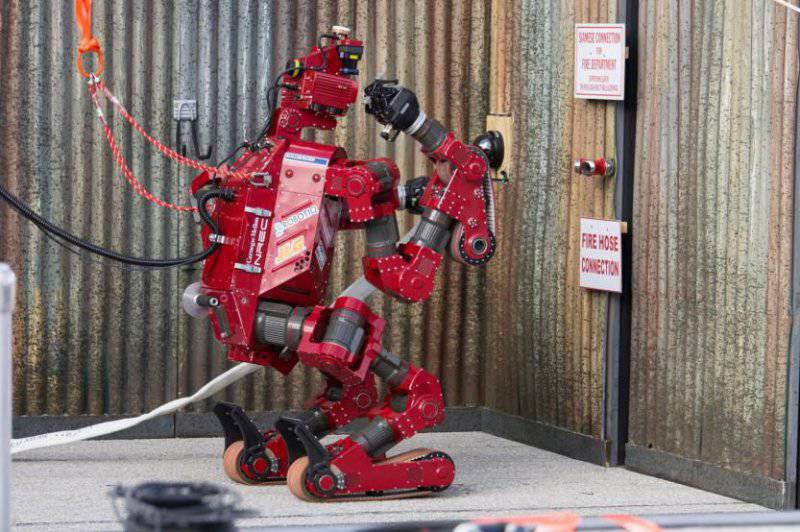
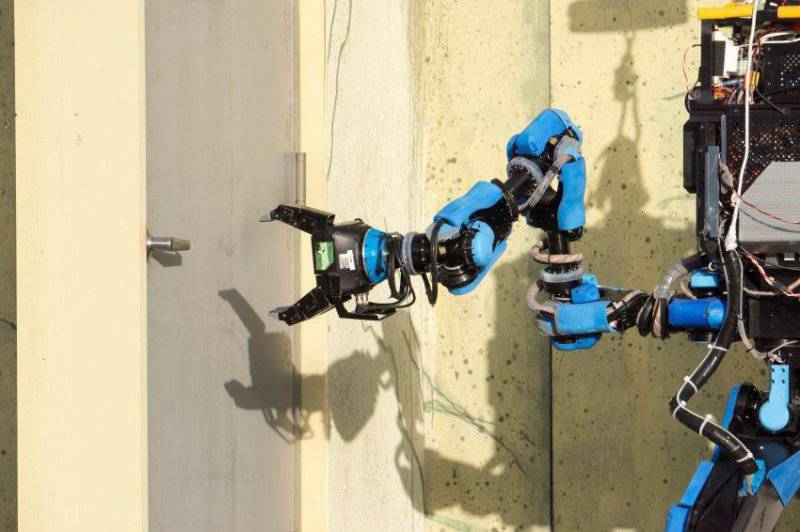
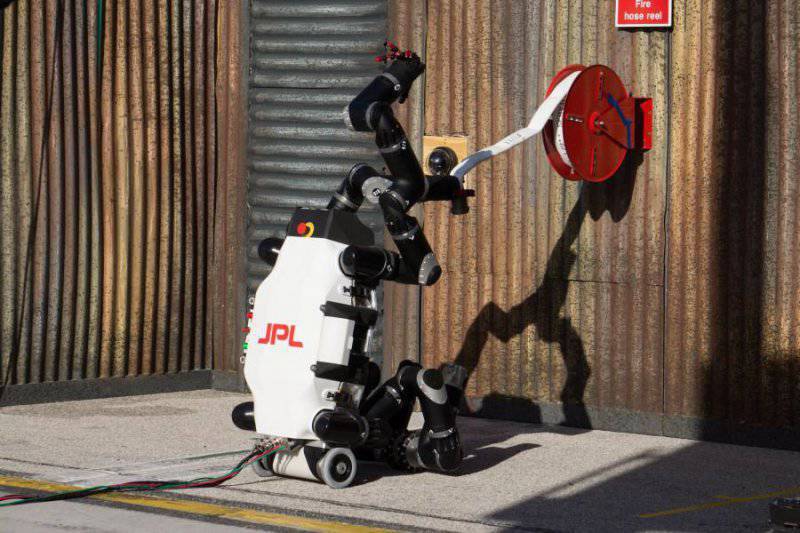
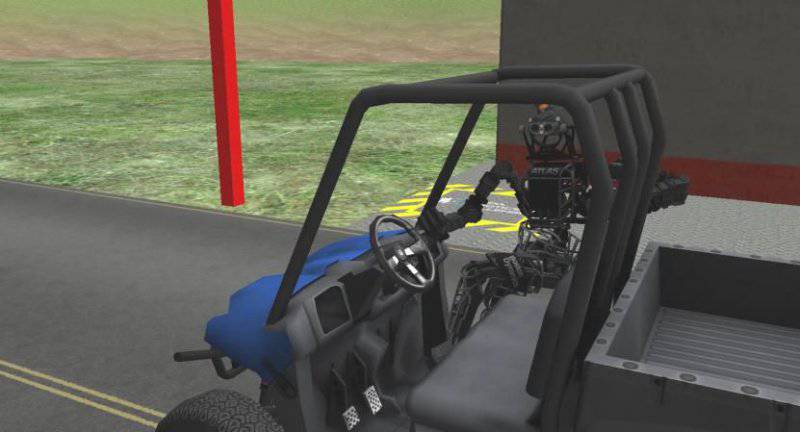
Information